 Your new post is loading...
 Your new post is loading...
Today, we’re looking at a collection of innovative retailers using these exciting new technologies for maximum impact on their customers. Join us for a 3-D roundup of who’s using AR / VR in showrooms, changing rooms, for in-store entertainment, product information, sales, on mobile apps and much more.
North Face has several augmented and virtual reality applications worth viewing – one is product focused and the other is entertainment. Forbes takes a look at whether virtual reality can save retail and how Samsung is pushing the boundaries in AR. In 10 locations, Macy’s is testing Macy’s On Call, an app developed by IBM and Satisfi. Craig Smith’s Retail Innovation has an excellent collection of profiles of retailers using digital innovations including augmented reality, virtual reality and more. Recommended viewing!
Marxent also has a useful set of e-commerce and bricks-and-mortar examples of augmented and artificial reality used in retail. Wayfair’s new virtual reality app lets customers visualize patio furniture on a deck to help them on the path to purchase. Lowe’s Holoroom gives customers help in visualizing a new kitchen or bathroom in its popular new virtual reality room.
Whisbi highlights virtual reality storytelling by North Face and virtual test drives by Lexus. M-commerce start-up Spring launched one of the first Facebook chat bots for virtual shopping. Sephora’s new Chicago store mixes old-fashioned makeup fun with futuristic touches including augmented reality and lots of touch-screens. Best Buy is betting big on virtual reality with Oculus Rift and PlayStation VR demos and sales in-store this fall. Finally, Pokémon Go further illustrates the potential for augmented reality to drive local or in-store retail traffic in big numbers. Enjoy your roundup of these retail innovators and learn from their creativity and digital marketing savvy.
Retail profits are plummeting. Stores are closing. Malls are emptying. The depressing stories just keep coming. Reading the Macy’s, Nordstrom, and Target earnings announcements is about as uplifting as a tour of an intensive care unit. The Internet is apparently taking down yet another industry. Brick and mortar stores seem to be going the way of the yellow pages. Sure enough, the Census Bureau just released data showing that online retail sales surged 15.2 percent between the first quarter of 2015 and the first quarter of 2016. But before you dump all of your retail stocks, there are more facts you should consider. Looking only at that 15.2 percent “surge” would be misleading. It was an increase was on a small base of 6.9 percent. Even when a tiny number grows by a large percentage terms, it is often still tiny. More than 20 years after the internet was opened to commerce, the Census Bureau tells us that brick and mortar sales accounted for 92.3 percent of retail sales in the first quarter of 2016. Their data show that only 0.8 percent of retail sales shifted from offline to online between the beginning of 2015 and 2016. So, despite all the talk about drone deliveries to your doorstep, all the retail execs expressing angst over consumers going online, and even a Presidential candidate exclaiming that Amazon has a “huge antitrust problem,” the Census data suggest that physical retail is thriving. Of course, the shuttered stores, depressed execs, and tanking stocks suggest otherwise. What’s the real story?...
" A surprising group of retailers are dominating social media conversations and engagement so far this holiday season, led by Nordstrom, Macy’s and Sephora, according to Shareablee Social Scorecard. Kohl’s came in at a much more distant fourth place, followed by Amazon.
The rankings, which are based on combined analysis of total actions —shares, comments, retweets, and reblogs — on Instagram, Facebook, Twitter and You Tube, show an overall 26% increase in engagement and 170% jump in actions this year. This is despite a sharp decrease in posts featuring Black Friday deals, which fell 32% on Facebook and 27% on Twitter.
"What really stood out to us this year is the rise of the specialty store, and not so much the mass marketers,” says Shareablee's founder and CEO, Tania Yuki. “I was expecting to see Walmart and Target ranked much higher, and instead we saw exceptional strength in brands like Nordstrom, Sephora, Barney’s and Neiman Marcus.”...
Data released by the Commerce Department shows that American consumers are putting what little extra money they do have to spend each month into eating out, upgrading their cars or fixing up their homes, as well as spending on sports gear, health and beauty. Spending at restaurants and bars has jumped more than 9 percent this year through July compared with the same period last year, and on autos by more than 7 percent, according to the agency.
U.S. Economy Grew at 2.3% Rate in 2nd QuarterJULY 30, 2015
Analysts say a wider shift is afoot in the mind of the American consumer, spurred by the popularity of a growing body of scientific studies that appear to show that experiences, not objects, bring the most happiness. The Internet is bursting with the “Buy Experiences, Not Things” type of stories that could give retailing executives nightmares....
Smartphones and the emergence of the Internet of Things is giving the consumer new power to demand the products that they want for the best possible price. One increasing trend is in-store real-time price comparison: 40% of consumers surveyed by GFK double check offers using their mobile phone.
What’s more, an additional one billion consumers across the world are expected to begin using smartphones in the next five years. For retailers, knowing the market and understanding how consumers want to shop is more important than ever.
The reason that consumers may purchase your product or services really boils down to 4 different factors. These include cultural factors, social factors, psychological motivations and personal motivations. If you think hard enough, every purchase you have ever made has come from one or a combination of these factors. Now lets take a deeper look into each of these factors and how they may relate to inbound marketing....
It’s a question that’s been at the forefront of marketers’ minds for years: How can I engage with customers uniquely, based on both their interests and their value to my brand? And then digging deeper: How can I manage that conversation not just digitally, but offline, too, through any channel? These are questions that have been asked, pondered, discussed and, ultimately, never answered. That is, until now. The promise of omnichannel marketing enlightenment gets realized this year....
Macy’s has announced they will shut down 14 stores as part of a restructuring effort, citing a shift in how consumers shop. The retail giant notes that this is part of a broader plan to meet consumers where they are: online.
The closed stores will mean a reduction of 1,343 jobs and should be completed within the next few months. The news has the average layperson assuming the worst of the brand, but Macy’s is no JCPenney, no, this is a simple effort that is common for large brands. These closures represent only a fraction of the brand’s 790 stores across America....
One of the bigger implications of our new mobile world is the hurt it is putting on the retail supply chain.
There used to be a day when the only way a consumer could get a product from a specific brand was to find it in a store. That isn’t true anymore. With so many brands now reaching the consumer directly and the expectations of the consumer reaching orbital requirements, what will happen to the legacy supply chains still being used by most retailers today?
RSR released a report on the impact that mobile is having on the supply chain and, in case you didn’t know, it has been disruptive and destructive. More change in retail = more opportunity for differentiation....
If the U.S. economy is getting better, then why are major retail chains closing thousands of stores? If we truly are in an “economic recovery”, then why do sales figures continue to go down for large retailers all over the country? Without a doubt, the rise of Internet retailing giants such as Amazon.com have had a huge impact. Today, there are millions of Americans that actually prefer to shop online. Personally, when I published my novel I made it solely available on Amazon. But Internet shopping alone does not account for the great retail apocalypse that we are witnessing.
In fact, some retail experts estimate that the Internet has accounted for only about 20 percent of the decline that we are seeing. Most of the rest of it can be accounted for by the slow, steady death of the middle class U.S. consumer. Median household income has declined for five years in a row, but all of our bills just keep going up. That means that the amount of disposable income that average Americans have continues to shrink, and that is really bad news for retailers....
A recent study called "Tweets in Action: Retail" by Compete, a media data analyzing company, discovered that Twitter users who see a retailer's tweet are more likely to visit their retail websites and make online purchases. This article made me consider the impact of a tweet on online retailers. I feel very strongly about online retailers using various social media outlets to build awareness around their business and boost sales. Without using this readily available tool, retailers online and off are missing out on a key audience that are constantly consuming information. This is the first in a series where I will examine social media tools and how they can work for online retailers....
|
Both current and former customers of the outdoor-clothing company Patagonia, for example, are more likely to consider themselves quite knowledgeable when compared to other shoppers, yet less equipped with social skills than the Lord & Taylor crowd. People who shop at Hot Topic, which caters to a younger, more alternative demographic, see themselves as highly imaginative, while patrons of Jos. A. Bank, which sells men's suits and business casual attire, see themselves as leaders.
Overall, these distinct personality types reveal the power of marketing, if done right.
One report anticipates that the retail industry alone will spend $15.09 billion on digital ads in 2016, followed by $16.95 billion in 2017 — a 12% increase. While it's important to know the best location to place an ad, knowing the personality of your intended audience is just as crucial....
Most retail outlets — whether conventional brick-and-mortar shops, digitally enhanced stores like Macy’s in the U.S. or Burberry in the UK, or online stores — assume a traditional three-stage consumption model. The customer experiences a need, shops to satisfy the need, and then consumes or uses the product purchased (I need shoes, I buy shoes, I wear them). TThe vocabulary of retailing reflects this model, assuming in particular that shopping is the central component of this model. Marketers will talk about shopping trips, shopping missions, shopping baskets, shopping lists, and destination trips. What’s more, current practice for the most part still rests on the idea that many decisions on which particular product to buy are made in the store — whether physical or online. Hence, brands engage in an arms race of persuasion and hard-sell tactics (prices, promos, presence) at the point-of-sale order to sway the customer when she is ready to transact. But winning in retailing today is less and less about control of the shopping experience because there is no longer a clearly defined shopping stage. The model is changing as new technologies allow people to bring the purchase of the product that satisfies their need closer to their first perception of it. And this makes the perception of the need — rather than the shop — the stage that marketers need to control. This paradigm shift — and it really is that — is apparent in three ways....
A calculative connection is fragile, the moment the numbers add up better for a competitor, a consumer with a calculative connection to a brand will quickly switch. Therefore, the consumers’ loyalty and the rich vein of data that you get in return is only yours if you are prepared to pay the most for it.
Competing on that basis, having a loyalty program that the calculative consumer will consider slightly better than everyone else’s is a race for the bottom, a price war that creates an in-balance in the fair exchange (the notion that today’s marketing activities needs to benefit both the consumer and the brand). To get out of this race for the bottom is to add earned loyalty to your program. ...
How much is your customer worth?
One approach would be to re-focus acquisition strategy based on the Customer Lifetime Value or CLV. According to the 2015 RJ Metrics Benchmark report, a new e-commerce customer is worth, on average, $154 in their first year. This number varies by type of retail. For instance, the categories of housewares, food and drugs tend to be above this average.
What is more interesting is that only 32 percent of these new customers are likely to make a second purchase in their first year. The report also reveals that the top 1 percent of customers are worth 18 times more than the average customer, which equals about $2,772.
Armed with this information, an e-tailer can easily calculate ROI on programs targeting new customers vs. programs targeting your biggest fans—the top 5 percent....
New research from Accenture finds retailers must significantly enhance their mobile and in-store shopping experiences to match the way shoppers want to deal with retailers across multiple sales channels.
According to a survey of 750 U.S. consumers, 32 percent said the biggest improvement retailers need to make in the shopping experience is to enable the use of all three sales channels — physical store, online and mobile — in an integrated way. Yet a separate analysis of 32 major retailers found tablet and mobile phone users are able to start shopping on their devices and complete the cycle in-store with only 22 and 19 percent of retailers, respectively....
Webloyalty research into online consumers has revealed that UK retailers could be missing out on as much as £66m in additional revenue through failing to personalise the experience they offer online shoppers. Over half of UK consumers said that they would make more of an effort to use a retailer if it offered a good personalised experience.
The top fifty retailers in the UK have an average turnover of £3.2bn*. For an average-sized retailer generating a turnover of £850m (such as Wickes or Mothercare), this could deliver a 7.8% uplift in sales**.
In monetary terms, this translates to an annual uplift of £66 million, not only stimulating online consumers to spend, but also helping to improve loyalty. For larger companies, this number would naturally increase even further....
Consumers today conduct a great deal of research about the products they are buying and brands are being asked to fulfill a multitude of informational needs.
Argos, a UK-based consumer goods and ecommerce retailer, is exceptional in that they maintain an active presence operating across a large range of touchpoints, both digitally and via traditional media. This case study takes a close look at how Argos reaches, influences, and engages consumers as they go through their purchase journeys....
Consumers want more from brick-and-mortar stores than they can get online, where shopping is faster, easier and often cheaper, members of a panel on retail. They're looking for human interaction, said Rachel Shechtman, founder of Story, a boutique in Chelsea. "The future of retail is about entertainment and community," she said. "It's really about the surprise and delight factor."
Her shop, Story, experiments with retail as a media channel, and is managed like a magazine, according to Ms. Shechtman. It has sponsorships, like magazines have ads, and it's completely redone every few weeks with new products and designs. Most of the shop, Ms. Shechtman says, is pure experience, with a smaller portion where customers can shop....
...Millions are spent on content creation and propagation across many channels and media. Multi-channel marketing concepts can be fitted to this alternate use case by helping brand marketers understand the contribution of content investments to an engaged audience of individual consumers. It’s like placing iBeacons on branded content such that marketing spend can be optimized around the messaging that connects best with consumers. Metrics such as open rates and website visitor dwell times become indicators of content quality comparable on a relative basis.It takes a blend of informed creative brilliance and technology enablement to pull this off – key is informed.
To these ends, it’s essential to reign in the insights digital channels capture to fuel a profile of individual consumers that lives, grows, and evolves just like the person it describes. These insights help both agencies and brand marketers inform brand storytelling with knowledge of their consumers beyond superficial characteristics. In this way, you could say consumers help write the story....
In an empowered age, people are exhibiting dramatically new habits in the way they become aware, consider, buy and advocate. These new habits supplement and do not necessarily in the near term replace the ways they traditionally evaluated and bought products and services. However, in time, we anticipate that these new behaviors are likely to become dominant.The three biggest shifts are enhanced expectations, connected experiences and self marketing.A simple example of a company that has both fueled and benefited from these shifts is Amazon. They both have created and responded to peoples expectations for speed, value and service, seamlessly connected all aspects of the “marketing funnel” and fed a habit of us marketing to ourselves as we search, evaluate and comment on products and services. Today 30% of all e-commerce searches start on Amazon versus only 13% on Google....
|




 Your new post is loading...
Your new post is loading...
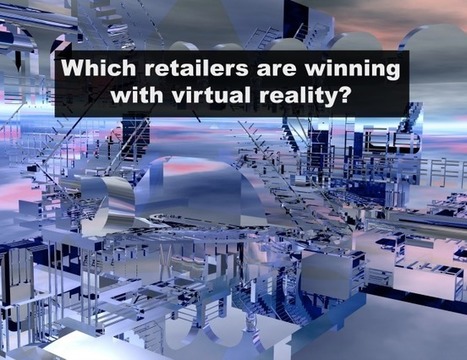


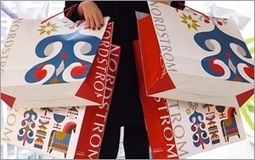
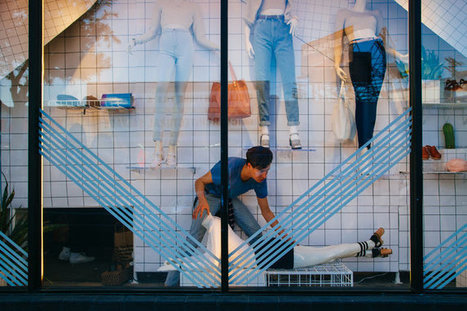
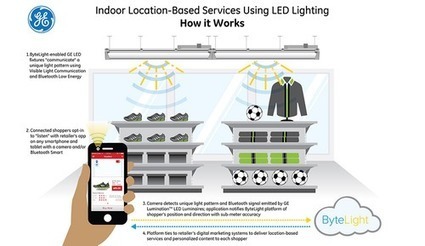


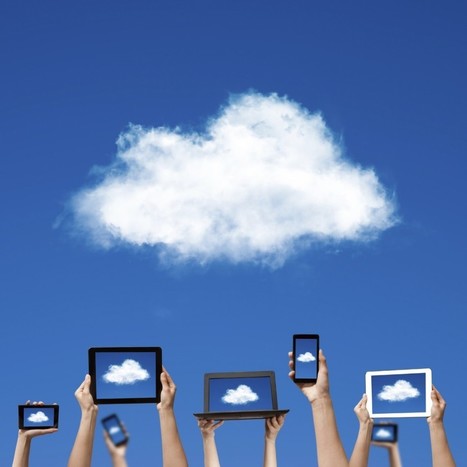
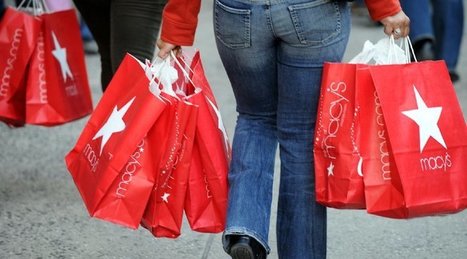







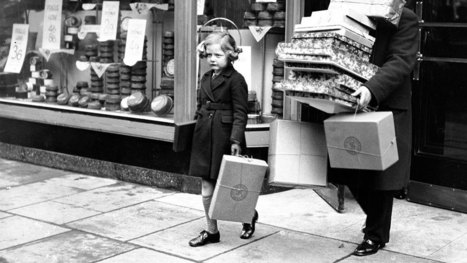





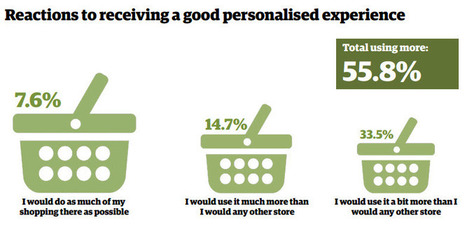
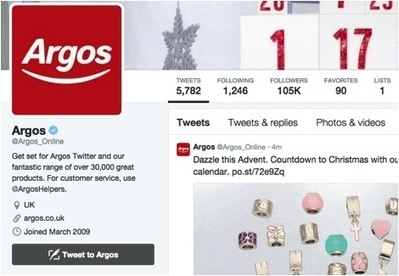








If you're a marketer, retailer or just looking for the latest trends in augmented and virtual reality, you'll find lots of inspiration from these retail innovators who are changing the face of the place formally known as stores. Dozens of the latest profiles and case studies and recommended reading. 10/10